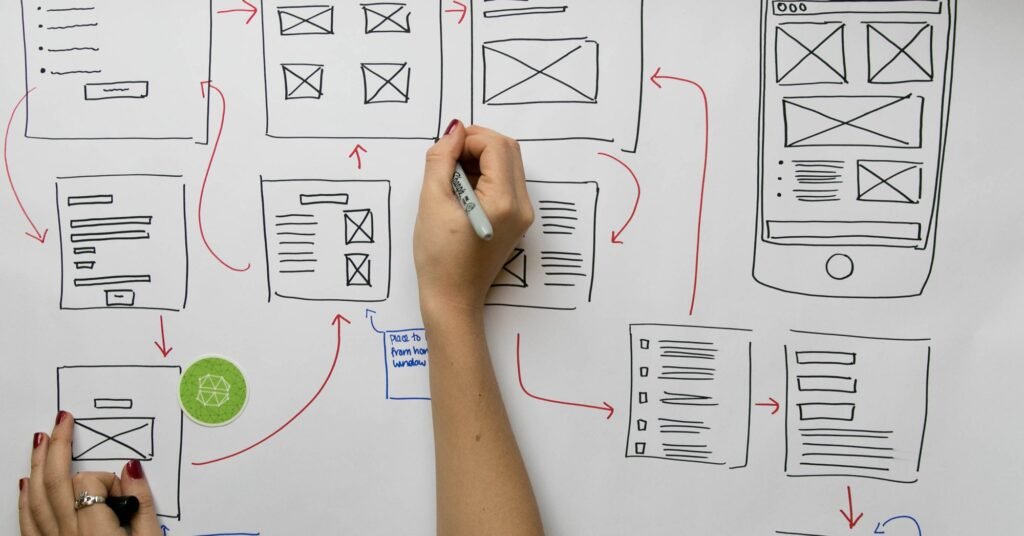Last Updated on February 1, 2024 by UX World
In the ever-evolving world of design, finding the perfect balance between form and function is an art that can hugely impact the user experience of your product. Design that is visually appealing but lacks usability can leave users frustrated and disengaged, while design that is purely functional but lacks aesthetic appeal can fail to captivate and inspire.
The question is how can you maintain the right balance?
This article explores how to define user-friendly experiences by finding the right balance between form and function. From understanding the needs and expectations of users to leveraging design principles that enhance usability, we will uncover the secrets to creating visually appealing and highly functional designs.
Whether you’re an experienced designer or a beginner, this article will provide you with the knowledge required to balance form and function.
Importance of Balancing Form and Function
Design is not just about making things visually good; it’s about making something work effectively. A balanced form and function is crucial because it ensures that the design not only looks aesthetically pleasing but also serves its purpose.
With a balance in form and function the design becomes intuitive, easy to use, and visually appealing. This balance is essential for creating user-friendly experiences that engage and delight users.
To achieve this balance, you need to understand the needs and expectations of your target audience. By conducting user research and gathering insights, you can gain a deeper understanding of what users want and what they dislike. This knowledge builds the foundation for creating designs that strike the right balance between form and function.
The Role of User Experience (UX) in Design
User experience (UX) plays a crucial role in design, as it focuses on creating meaningful and enjoyable experiences for users. UX design involves understanding the user’s journey when they interact with your product to achieve the desired goals.
When designing a good user experience, it’s important to consider the overall flow and structure of the design. This involves creating intuitive user interfaces that guide users through the desired actions and tasks. By prioritizing user needs and designing with empathy, you can ensure that the form and function of your designs align seamlessly.
Principles of User-Centered Design
User-centered design is an approach that keeps the user at the center of the design process. It involves understanding the goals, motivations, and behaviors of users to create designs that meet their needs effectively. For this purpose, you need to follow a set of design principles that will guide your decision-making process.
One of the key principles of user-centered design is simplicity. By simplifying the design and removing unnecessary clutter, designers can create interfaces that are easy to understand and navigate. This simplicity enhances the user experience, making it more enjoyable and efficient.
Another principle is consistency. Consistency in design helps users build mental models and understand how different elements within a design relate to each other. By maintaining consistent visual cues, language, and interactions, you can create cohesive and intuitive user experiences.
The Impact of Visual Aesthetics on User Perception
Visual aesthetics play a significant role in how users perceive and interact with a design. The visual appeal of a design can invoke emotions, create a sense of trust, and influence user behavior. When the form of a design aligns with its function, it enhances the overall user experience.
Colors, typography, and imagery are essential elements that contribute to the visual aesthetics of a design. By selecting the right combination of colors, typography, and imagery, you can create visually appealing designs that engage your users.
However, it’s important to strike a balance between aesthetics and usability. It is correct that visually stunning designs can be eye-catching. However, if they hinder usability or distract users from their goals, they can deteriorate the overall user experience.
Designing for Usability and Functionality
Designing for usability and functionality requires a deep understanding of user needs and goals. A user-friendly design should be easy to learn, efficient to use, and provide a pleasant experience for users. Here are some key considerations for achieving usability and functionality in design.
1. Clear Navigation
Well-designed navigation allows users to move seamlessly through a design. It should be intuitive, easy to understand, and provide clear direction for users to find the information or features they need.
2. Consistent Layout
Consistency in layout and structure helps users quickly understand the design and find what they’re looking for. By organizing content in a logical and consistent manner, you can enhance the usability of your design
3. Responsive Design
With the increasing use of mobile devices, designing for responsiveness has become essential. A responsive design adapts to different screen sizes and resolutions, providing a seamless user experience across devices.
4. Accessible Design
Accessibility is a critical aspect of user-friendly design. By considering users with disabilities or impairments, you can ensure that your designs can be accessed by all users.
Incorporating User Feedback in Design Process
Getting user feedback earlier in the design process is the key to creating user-friendly designs. By involving users, designers can gain insights into what works well and what needs improvement. Incorporating user feedback into the design process allows you to iterate and refine your designs before going into the development stage.
There are various methods for collecting user feedback, such as surveys, interviews, and usability testing. By actively seeking feedback and involving users in the design process, you can create designs that truly meet user needs and expectations.
The Role of Wireframing and Prototyping in Achieving a Balance
Wireframing and prototyping are essential tools in the design process that help you visualize and test your ideas before final implementation. Wireframes are low-fidelity representations of a design, focusing on the layout and structure. They allow designers to quickly iterate and explore different design solutions.
Prototyping, on the other hand, involves creating interactive models of a design that simulate user interactions. Prototypes can help you test the functionality and usability of a design, allowing them to identify and address any usability issues before the final implementation.
By incorporating wireframing and prototyping into the design process, you can iterate and refine your designs, ensuring a balance between form and function.
Case Studies of Successful Form and Function in Design
To truly understand the art of balancing form and function, let’s take a look at some of the successful case studies.
Apple’s iPhone
The iPhone is a prime example of a design that seamlessly balances form and function. Its sleek and minimalist design appeals to users’ aesthetic sensibilities, while its intuitive user interface and functionality make it easy to use.
Google’s Search Engine
Google’s search engine is another example of a design that prioritizes usability and functionality. Its clean and simple design allows users to focus on their search queries, while its powerful algorithm provides highly relevant search results.
Tesla’s Electric Cars
Tesla’s electric cars are not only aesthetically pleasing but also highly functional. The design incorporates innovative features and technologies that enhance the overall driving experience, making electric cars more accessible and desirable.
These case studies demonstrate how successful designs strike the right balance between form and function, creating user-friendly experiences that leave a lasting impact.
Tools and Resources for Creating User-Friendly Experiences
In today’s digital era, designers have access to a wide range of tools and resources that can help create user-friendly experiences. Here are some popular tools and resources.
Designing Tools
Tools like Sketch, and Figma provide designers with powerful features and capabilities for creating user-friendly designs.
Usability Testing Tools
Usability testing tools like UserTesting and Hotjar allow designers to gather valuable user feedback and insights to improve the usability of their designs.
Design Communities and Forums
Online communities and forums like Dribbble and UX Stack Exchange provide a platform for designers to connect, share ideas, and learn from each other.
Design Books and Blogs
There are numerous books and blogs available that provide insights into user-centered design, usability principles, and best practices in creating user-friendly experiences.
By leveraging these tools and resources, designers can stay updated with the latest trends and techniques in creating user-friendly designs.
Conclusion
Balancing form and function is an art that requires a deep understanding of user needs, design principles, and the ability to iterate and refine. By prioritizing user experience, incorporating user feedback, and leveraging design principles, you can create user-friendly experiences that engage, delight, and leave a lasting impact.
Remember, the perfect balance between form and function is not a one-size-fits-all approach. It varies depending on the target audience, the purpose of the design, and the context in which it will be used. Therefore, it’s essential to continuously test, iterate, and refine designs to ensure they meet the evolving needs and expectations of users.
Want to Learn UX Design?
Try Interaction Design Foundation. IxDF offers online design courses that cover the entire spectrum of UX design, from foundational to advanced level. As a UX Design World reader, you get 25% off your first year of membership with the IxDF.
Thanks for reading.
Subscribe for more related articles at UX World.
If you have any questions, contact here: Facebook | YouTube | Twitter | Instagram | Linkedin



